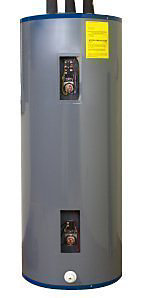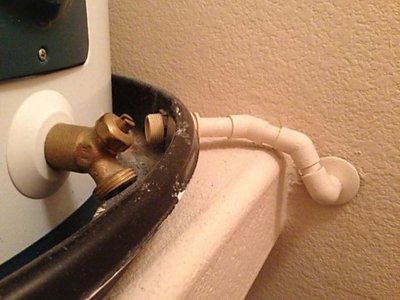Why Is My Water Heater Making A Popping/Knocking Noise?

Is your water heater making a popping noise similar to how it sounds when your microwave is cooking popcorn?
That popping noise probably means there’s sediment at the bottom of your water heater tank.
The solution? Simple—the tank just needs flushing.
You can either flush the tank yourself or call a professional plumber to do it for you.
You may be wondering, “How serious of a problem is this noise?”
Well, right now, this noise just means your water heater is running inefficiently, raising your heating bill as a result. But—over time—sediment buildup could cause damage to the water heater.
We’ll explain in more detail:
- What sediment is and how it gets in your water heater
- Why sediment buildup causes this noise
- How you can flush the water heater yourself
What sediment is and where it comes from
Sediment is just loose minerals that settle to the bottom of water. So where does the sediment come from? From the water itself! Florida’s water is full of minerals, making our water “hard” (as opposed to “soft” and mineral-less).
It’s not bad for the water to have minerals, though. Your body needs them. But your water heater does not.
Once sediment gets into the water heater, it settles to the bottom of the tank, causing your water heater to work inefficiently—and can cause damage to the tank if it overheats.
Why sediment buildup causes the popping noise
The popping noise is steam bubbles escaping the sediment. It’s just like how boiling water in a covered pot on the stove starts pushing up the pot’s top.
Your water heater’s heating element is at the bottom of the tank, right where the sediment has settled and mixed with water.
Some of the water under the sediment starts boiling and tries to escape the sediment layer, making the popping noise as a result.
The problem with this: your water heater is struggling to heat the water properly, meaning it runs longer. Your water heater’s tank can even overheat, deteriorating the tank’s protective inner lining as a result.
How to flush the water heater tank
To understand how to flush your water heater, you need to understand what certain parts are called and where they’re located. Use this anatomy of a water heater as a reference.
Now follow these steps to flush the tank:
- Put on some heavy-duty gloves so you don’t burn yourself.
- Turn off the water heater. If you have a gas water heater, turn the temperature setting to “Pilot.” If you have an electric water heater, turn off the water heater at the circuit breaker.
- Turn the cold water shut off valve to prevent more cold water from entering the water heater.
- Let the water heater cool down for about 30 minutes. Please don’t get impatient since you could burn yourself if you try to flush the tank while the water is still hot.
- Connect a garden hose to the drain valve located at the bottom of the water heater tank, pictured here:

- Place the other end of the hose at a place where the sediment and water can safely drain to, like a basement drain.
- Open a hot water faucet in a sink or tub to prevent a vacuum from forming in the lines.
- Open the water heater’s drain valve by turning a small slot on the valve.
- Pull the tab out on the pressure relief valve.
- Let the water drain out completely. Note: You may not see any sediment come out at this point. That’s normal/ Continue to the next step.
- Turn the cold water valve on to flush out any remaining sediment.
- Once the water starts running clear, close the drain valve and allow the cold water to fill the tank.
- Turn the water heater’s heating element back on.
You should flush your water heater like this once a year.
Want a professional plumbers help?
If doing the above steps sounds bothersome, you can always hire a professional plumber to help.
If you live in Sarasota, Tampa Bay, Naples, Orlando or the surrounding areas, Plumbing Today can help. Contact us for water heater maintenance.
Posted in: Troubleshooting